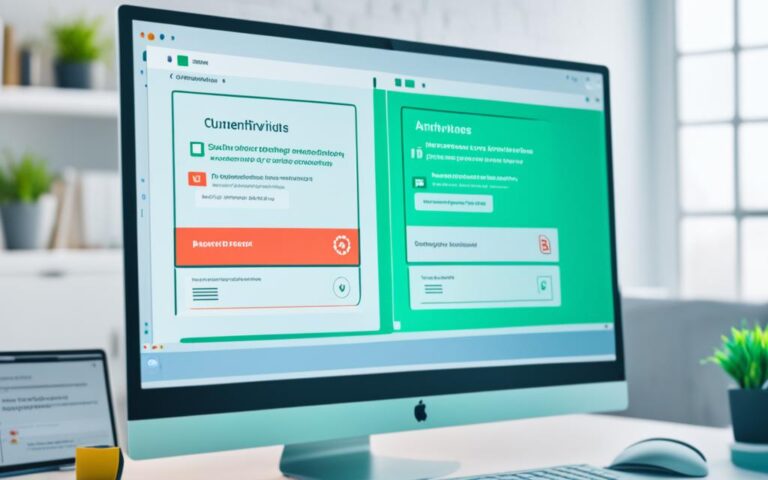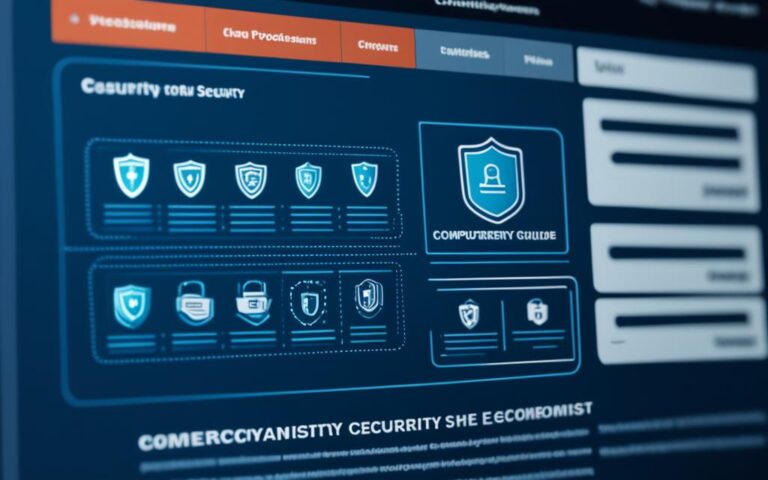Essential Tools for Effective Security Threat Removal
When it comes to safeguarding your organization’s digital assets, having effective security solutions in place is crucial. With the rise in security threats, it is essential to equip your cybersecurity team with the right tools to combat these challenges.
Open-source software provides durability, relevance, and compatibility with new technologies, making it an excellent choice for security professionals. In this article, we will explore 20 essential open-source cybersecurity tools that can aid in your security threat removal efforts.
Adalanche, AuthLogParser, BobTheSmuggler, CloudGrappler, CVEMap, CVE Prioritizer, DriveFS Sleuth, EMBA, Faction, Lynis, Mobile Security Framework (MobSF), Prowler, Quicmap, RiskInDroid, SiCat, SOAPHound, Subdominator, TruffleHog, Web Check, and WebCopilot are just a few of the open-source tools we will delve into.
Join us as we explore the functionalities of these tools in investigations, threat detection, vulnerability management, and security assessment. Discover how these tools can provide valuable insights, strengthen your security infrastructure, and mitigate risks effectively.
Open-Source Cybersecurity Tools for Investigations and Analysis
Open-source cybersecurity tools play a crucial role in investigations and analysis within the realm of digital forensics and incident response. These tools offer invaluable insights into various facets of cybersecurity, enabling professionals to gain a deeper understanding of potential threats and their impact on systems.
Two prominent open-source tools that excel in investigations and analysis are:
- AuthLogParser: This tool focuses on Linux authentication logs, allowing investigators to extract and interpret critical information. AuthLogParser assists in identifying unauthorized access attempts, detecting potential breaches, and piecing together the timeline of events. With its robust analytical capabilities, it offers a comprehensive view of the authentication process and aids in determining the root cause of security incidents.
- DriveFS Sleuth: For those operating within environments where Google Drive File Stream is utilized, DriveFS Sleuth proves to be an essential tool. It is designed to analyze disk artifacts associated with Google Drive File Stream, providing investigators with valuable evidence and insights. By reconstructing file histories, recovering deleted files, and identifying file conflicts, this tool greatly enhances the investigative process.
These open-source cybersecurity tools empower professionals to conduct thorough investigations and analysis, enabling them to uncover critical details and make informed decisions. By leveraging the capabilities of AuthLogParser and DriveFS Sleuth, security teams can strengthen their incident response procedures and effectively mitigate potential threats.
“Open-source cybersecurity tools provide investigators with the necessary means to dig deeper, unveiling hidden patterns and shedding light on potential security breaches.” – Sarah James, Cybersecurity Expert
Key Features of AuthLogParser and DriveFS Sleuth
| Tool | Key Features |
|---|---|
| AuthLogParser | 1. Extraction and interpretation of Linux authentication logs 2. Detection of unauthorized access attempts 3. Analysis of the authentication process 4. Timeline reconstruction of security incidents |
| DriveFS Sleuth | 1. Disk artifact analysis for Google Drive File Stream 2. Recovery of deleted files 3. Identification of file conflicts 4. Reconstructed file histories |
With their powerful capabilities and adaptability, AuthLogParser and DriveFS Sleuth are indispensable tools for investigators and analysts in the cybersecurity field. The insights gained from these open-source tools contribute significantly to the overall understanding of security incidents, bolstering organizations’ defenses against potential threats.
Open-Source Cybersecurity Tools for Threat Detection
When it comes to safeguarding sensitive data and protecting against cyber threats, open-source cybersecurity tools play a critical role. In this section, we will explore two powerful open-source tools, CloudGrappler and Prowler, that are specifically designed to assist security teams in identifying and detecting threats within AWS and Azure environments.
CloudGrappler
CloudGrappler is an open-source tool that provides enhanced threat detection capabilities for cloud-based environments. It utilizes advanced algorithms and machine learning techniques to analyze network traffic, logs, and other relevant data, enabling security teams to identify anomalous activities and potential threats. By monitoring and correlating data from multiple sources, CloudGrappler helps organizations detect and respond to security incidents quickly and effectively.
Prowler
Prowler is another open-source tool focused on threat detection and security assessment within AWS environments. It conducts automated security audits, scanning for vulnerabilities, misconfigurations, and potential loopholes that could be exploited by threat actors. Prowler generates detailed reports, providing valuable insights into the security posture of AWS infrastructures and offering recommendations for remediation.
“These open-source tools empower security teams to proactively identify and address threats, ensuring the integrity and confidentiality of critical data.” – Security Expert
By leveraging these open-source cybersecurity tools, organizations can strengthen their threat detection capabilities and stay one step ahead of cybercriminals. Moreover, the collaborative nature of open-source software allows for continuous improvement and innovation, ensuring that these tools remain up-to-date and effective in the face of evolving threats.
| Open-Source Tool | Key Features |
|---|---|
| CloudGrappler | Advanced threat detection algorithms Machine learning-based analysis Correlation of data from multiple sources |
| Prowler | Automated security audits Vulnerability scanning Identifying misconfigurations and loopholes |
Open-Source Cybersecurity Tools for Vulnerability Management
When it comes to managing vulnerabilities in your cybersecurity infrastructure, open-source tools can provide valuable assistance. Two such tools that stand out are CVEMap and CVE Prioritizer.
Let’s take a closer look at how these open-source cybersecurity tools can help you explore Common Vulnerabilities and Exposures (CVEs) and prioritize the patching of vulnerabilities. They offer insights into vulnerability databases as well as the probability of exploitation and potential effects on your systems.
CVEMap
CVEMap is a powerful open-source tool designed to help you navigate the vast landscape of known cybersecurity vulnerabilities. With CVEMap, you can search for specific CVEs and gain a deeper understanding of their nature and potential impact on your systems. The tool provides a comprehensive overview of vulnerabilities, including information on their severity and exploitability.
CVEMap allows you to assess the risk posed by each vulnerability, enabling you to make informed decisions on patch deployment and mitigation strategies.
CVE Prioritizer
CVE Prioritizer is another open-source tool that complements CVEMap by helping you prioritize your vulnerability management efforts. This tool takes into account factors such as the severity of the vulnerability and the likelihood of exploitation. By analyzing these elements, CVE Prioritizer assigns a priority level to each vulnerability, allowing you to focus on addressing the most critical issues first.
CVE Prioritizer ensures that limited resources are allocated effectively, helping you address vulnerabilities efficiently and reduce your organization’s risk exposure.
By leveraging these open-source tools for vulnerability management, you can streamline your patching processes and enhance your overall cybersecurity posture. The insights provided by CVEMap and CVE Prioritizer empower you to make data-driven decisions and allocate resources where they are needed the most.
| Open-Source Cybersecurity Tool | Key Features and Benefits |
|---|---|
| CVEMap |
|
| CVE Prioritizer |
|
Open-Source Cybersecurity Tools for Security Assessment
When it comes to security assessment, open-source cybersecurity tools play a crucial role in evaluating and fortifying system defenses. Let’s explore three powerful tools that aid in security auditing and assessment:
Lynis
Lynis is an open-source security auditing tool that comprehensively evaluates security measures, identifies vulnerabilities, and offers recommendations for system hardening. Its extensive range of checks includes authentication, logging, system integrity, and network settings. By leveraging Lynis, security professionals can ensure that their systems adhere to industry best practices and are adequately protected against potential threats.
MobSF
For mobile app security assessment, MobSF (Mobile Security Framework) is a trusted open-source tool. It assists in identifying security flaws and vulnerabilities in Android and iOS applications. MobSF performs static and dynamic analysis, code review, behavior analysis, and identifies potential security risks that could be exploited by attackers. By analyzing and remediating these vulnerabilities, organizations can enhance the security posture of their mobile applications.
Web Check
Web Check is an open-source tool that provides valuable open-source intelligence on a website’s infrastructure and security posture. It scans websites for vulnerabilities, such as outdated software versions, misconfigurations, and weak security practices. By regularly utilizing Web Check, organizations can proactively identify weaknesses in their web applications and take appropriate measures to mitigate potential risks.
By leveraging Lynis, MobSF, and Web Check, security professionals can perform in-depth security assessments, identify weaknesses, and implement necessary improvements to protect systems and data from potential threats.
To summarize, open-source cybersecurity tools for security assessment such as Lynis, MobSF, and Web Check provide valuable insights and capabilities to evaluate and strengthen system defenses. These tools empower organizations to proactively assess the security posture of their systems, identify vulnerabilities, and take appropriate measures to protect against potential threats.
Conclusion
In conclusion, open-source cybersecurity tools provide valuable resources for investigations, threat detection, vulnerability management, and security assessment. These tools offer an effective and cost-efficient approach to fortify organizations against threats, ensuring the safety of their premises and sensitive data.
By utilizing open-source cybersecurity tools such as Adalanche, AuthLogParser, CloudGrappler, and Lynis, security professionals can gain insights and perform comprehensive analysis to address potential vulnerabilities and secure their systems.
In summary, open-source cybersecurity tools contribute significantly to the development of effective security solutions. With their ease of accessibility and compatibility with various technologies, these tools empower organizations to proactively protect their assets and mitigate risks in an ever-evolving threat landscape.












